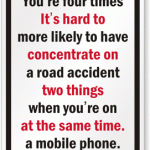Walkable neighborhoods necessary, not sufficient for active transport
Can making a neighborhood more walkable change residents’ habits in socioeconomically depressed areas? Possibly, but there are a number of factors that stop that from happening, says a new study by researchers Madeleine Steinmetz-Wood and Yan Kestens, Does the effect of walkable built environments vary by neighborhood socioeconomic status?. The study finds that other factors like trip distance, or being unemployed impact habits perhaps even more than a built environment does.

Image from AV Dezign.
Previous studies have shown that people with a lower socioeconomic status tend to not meet recommended physical activity guidelines. Active transportation, which is walking, cycling, and other human-powered forms of getting around, write the authors, has the potential to increase physical activity among poorer populations. As the authors explain, promoting active transport in certain disadvantaged communities may help increase the health of the community residents. Creating walkable built environments is one method that has been recommended by experts to up residents’ physical activity.
For this study, researchers studied data from the 2008 Montreal Origin-destination survey, which provides a sample of over 150,000 participants; the researchers chose those who had traveled within the metro area of Montreal during the day prior to the interview. Participants also had to be within 18-65 years old. Respondents were asked to report travel mode, starting point and ending point. The researchers integrated this information with data on roads, land-use, commercial destinations and other census data.
Among the study’s handful of interesting discoveries, researchers found that certain respondents were more likely to use active transport: men without drivers’ licenses, as well as those who were unemployed, tended to use active transportation more than other groups. Distance impacted the likelihood of walking, biking or using other active forms of transportation, too; specifically, traveling more than one kilometer (or 0.62 miles) translated into a lower likelihood of using active transport.
The conclusions? While changing the built environment in low socioeconomic areas has the potential to boost physical activity among residents, the authors write, these changes may not be enough to “sufficiently promote” active forms of transport. Those implementing change need to consider individual and social environment factors that pose “considerable barriers” to changing physical activity levels.
Yet the study did have some limitations: for one, the researchers measured socioeconomic status by neighborhood, not by individual. It’s possible that residents of a low socioeconomic status area actually belong to a higher status themselves.
Another limitation: though previous studies have determined that around 11 percent of commuters in the Montreal area meet their daily goal of 30 minutes of physical activity by walking to public transit stops, researchers on this study found the percentage to be much lower. (This might mean people did not report trips like these accurately.)
Read more about the findings, and discover the study specifics here.
Related Posts
Category: Uncategorized

















